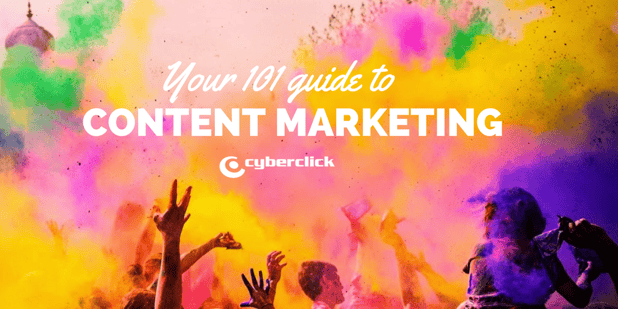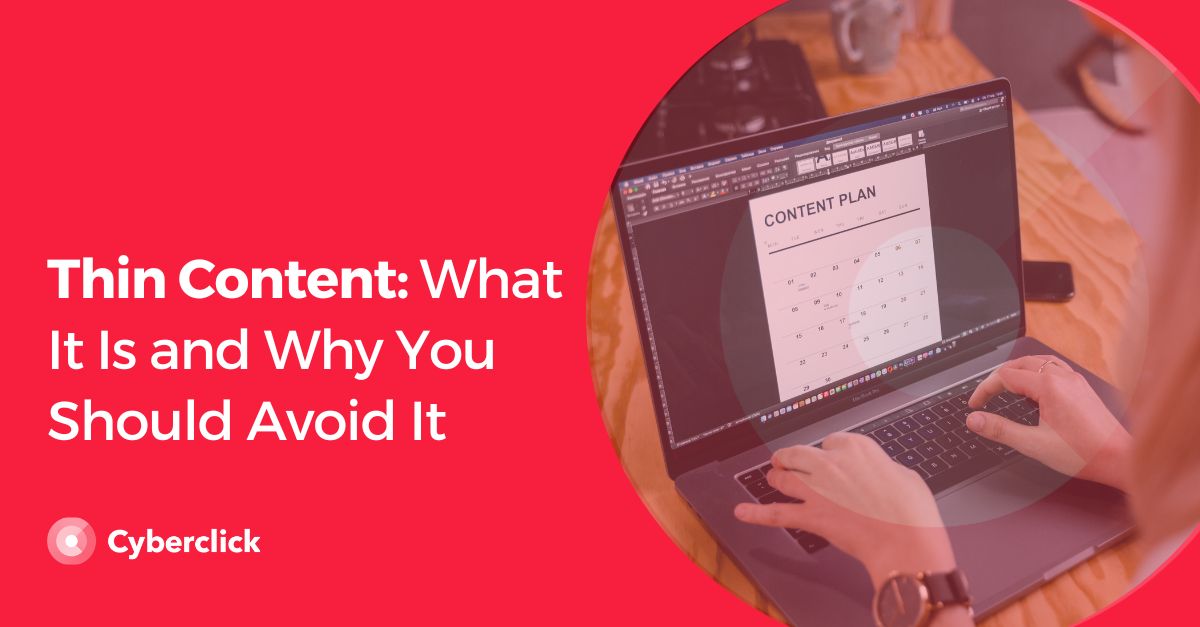By now, you’ve surely heard at some point the phrase “Content is King”. Far from going out of fashion, content marketing continues to be as important as ever for marketers. In fact, according to a study by DemandMetric, 78% of CMOs believe that custom content is the future of marketing.
If you haven’t yet jumped aboard the content train for your brand, I’d like to encourage you to start doing it as soon as possible with this guide to getting started! We’ll go over what is and isn’t branded content, the benefits, the most used formats, as well as some strategies to attract clients.

What is and what isn’t content marketing
Content is to the digital marketer as black is to fashion: a classic that never fails. 12 years ago, Joe Pulizzi gave a definition that continues to ring true: “Content marketing is a strategic marketing approach focused on creating and distributing valuable, relevant, and consistent content to attract and retain a clearly-defined audience — and, ultimately, to drive profitable customer action.”
Simple enough, right? Just to make sure you really have it down pat, let’s take a look at some clues as to what this kind of marketing is, and what it isn’t.
What content marketing is
- Offering value, free of charge. “Give and you shall receive” is one of the big mottos of content creation.
- A long term investment. Some companies start writing a blog with all the enthusiasm in the world, and then give up when they can’t quantify results after a couple of months. Wrong! Before jumping in, you need to fully understand that to get the best results, you have to be consistent, and think in the long term.
- A whole-team effort. If you think about all the different people who work in your company, you’ll be sure to find that everyone can offer new and fresh perspective on your content. Although the bulk of the responsibility belongs to the marketing department, getting your whole team involved will make your content much more interesting.
What it isn’t
- It is not just writing articles. When we think about this kind of marketing, we often only think of the first step: creating content related to your brand. In reality, it is an entire content strategy that consists in four phases: generating traffic, generating leads, lead nurturing and generating clients.
- It is not native advertising. Although they do share some common characteristics, native advertising differs from content marketing in two major aspects: first of all, it is based on paying for other people’s spaces (as opposed to publishing on our own channels) and uses a pre-existing audience (rather than creating our own from scratch).
- It is not inbound marketing. Well, content marketing is inbound marketing, but the opposite is not necessarily true. The concept of inbound marketing encompasses all actions to attract clients to your business, including more traditional tools such as advertising.
- It is not copywriting. Do not give in to the temptation of using your blog as an excuse to sell! Content marketing revolves around helping and supporting the user. Slogans and excessively sales-y monologues are not welcome here.
---
“The main goal of content marketing is to offer
value to the user to strengthen your brand.”
---
The benefits of content marketing
Content marketing is a long term investment, that requires time and resources. So why even bother? Here are some of the benefits of a good content strategy:
- You win your users’ trust. Regularly publishing quality content lets users know they can trust your brand. After all, if you are willing to help them for free, what won’t you be willing to do when they’re paying you?
- You position yourself as an expert in your industry. If you can “be there” when a newspaper writes an article about your industry, or when someone wants some information on a specific topic, you will gain recognition and authority, turning yourself into an industry expert.
- It improves your long term strategy. With a well developed content plan, you can take comfort in knowing what direction your marketing is going in and what you will be doing and when.
- It improves your search engine positioning (SEO). Regularly publishing content is a sure-fire way to get Google to love you. If you are able to get your content positioned among the first search engine results, you will have access to an incredible source of free traffic.
- It generates clients and sales. As a consequence of all of the above, your sales will grow, with more users visiting your website, and who trust you more. Nevertheless, if you want your strategy to actually work and be effective, do not forget about the next steps in the content marketing conversion funnel we mentioned earlier (lead generation, lead nurturing, client generation).
We also recommend reading 6 captivating statistics related to Content Marketing.
The most popular branded content formats
Before beginning to think of the different formats you can use, my recommendation is to know exactly what you’re focusing on: what value can you offer your potential clients, and how will you get the message across. According to this, you will find yourself leaning towards some formats or others. In any case, keep in mind that it is always a good idea to create different kinds of content, to see which ones work best, and to offer some level of variety.
That being said, here are the most popular formats, whose efficiency in content marketing have been proved time and time again:
- Blogs. Although they have been around for decades, they are still one of our favorite ways to consume content.The key to a successful blog is to publish regularly and consistently, have well organized categories and tags and invest in high quality articles. “Filler” content may be cheaper to produce, but will cost you in the long run.
- Reports, white papers and other downloadable PDFs. This kind of content offers a lot of value to people who are looking to learn more about a certain topic, and are a big help in positioning you as an industry expert. They are also a very efficient way to get your potential clients emails and basic contact details.
- Newsletters. Once you have been able to gather a database of people who are potentially interested in your brand, newsletters are a great way to keep in touch. You can use them to promote your blog’s best content.
- Videos. Video continues to be a trend and is only becoming more and more popular among users. Formats such as video tutorials are very effective in position you brand, while live videos are a great, innovative way to reach out to your audience and show off your spontaneity.
- Infographics. The perfect addition to your blog to make it easily shareable on social media.
---
Create different types of content in order to see
which ones work best, as well as offer some variety.
---
Strategies to attract clients with content marketing
When planning your content marketing strategy, you can focus on many things. My main advice is to start off simple, always keeping the four steps we mentioned above in mind. Here are some ideas:
- Create the best content possible. If you are going to make the long term investment this kind of marketing requires, do it well! You need your content to impress your users, so much so that they recommend it to their friends and view you as a reference point.
- Don’t focus only only traffic, but on conversions, too. Traffic and visitors, on their own, won’t benefit you all that much. Leads, on the other hand, are very beneficial to you. Which is why you need to make sure you have a strategy to get visitors to leave you their contact details, and offer them something of value in exchange.
- Invest in SEO. Consistently creating high quality content makes search engines very happy… but this isn’t the only SEO related thing you should keep in mind. For your content to be easy to find and relevant, they should be well tagged and follow some sort of positioning guidelines (that do not include nonsensically repeating a keyword). If you are careful with this from the very beginning, you will start seeing the effects of your content much sooner.
- Think long term. I will not get tired of saying it: planning is half the battle. In order for your publishing to be consistent and reliable, you need to organize your content calendar in advance.
Responsable de la estrategia de contenidos y visibilidad en Cyberclick, con enfoque Allbound y especialización en posicionamiento SEO, GEO y automatización con IA. Gestión avanzada del CRM con HubSpot: base de datos, workflows, lead nurturing, scoring y reporting. Experiencia en marketing digital, comunicación corporativa y periodismo, uniendo estrategia, creatividad y tecnología para captar y convertir leads cualificados.
Responsible for content and brand visibility strategy at Cyberclick, with an Allbound approach and specialization in SEO, GEO (Generative Engine Optimization), and AI-powered automation. Advanced HubSpot CRM management: database segmentation, workflows, lead nurturing, scoring, and reporting. Background in digital marketing, corporate communications, and journalism—combining strategy, creativity, and technology to attract and convert qualified leads.





Leave your comment and join the conversation